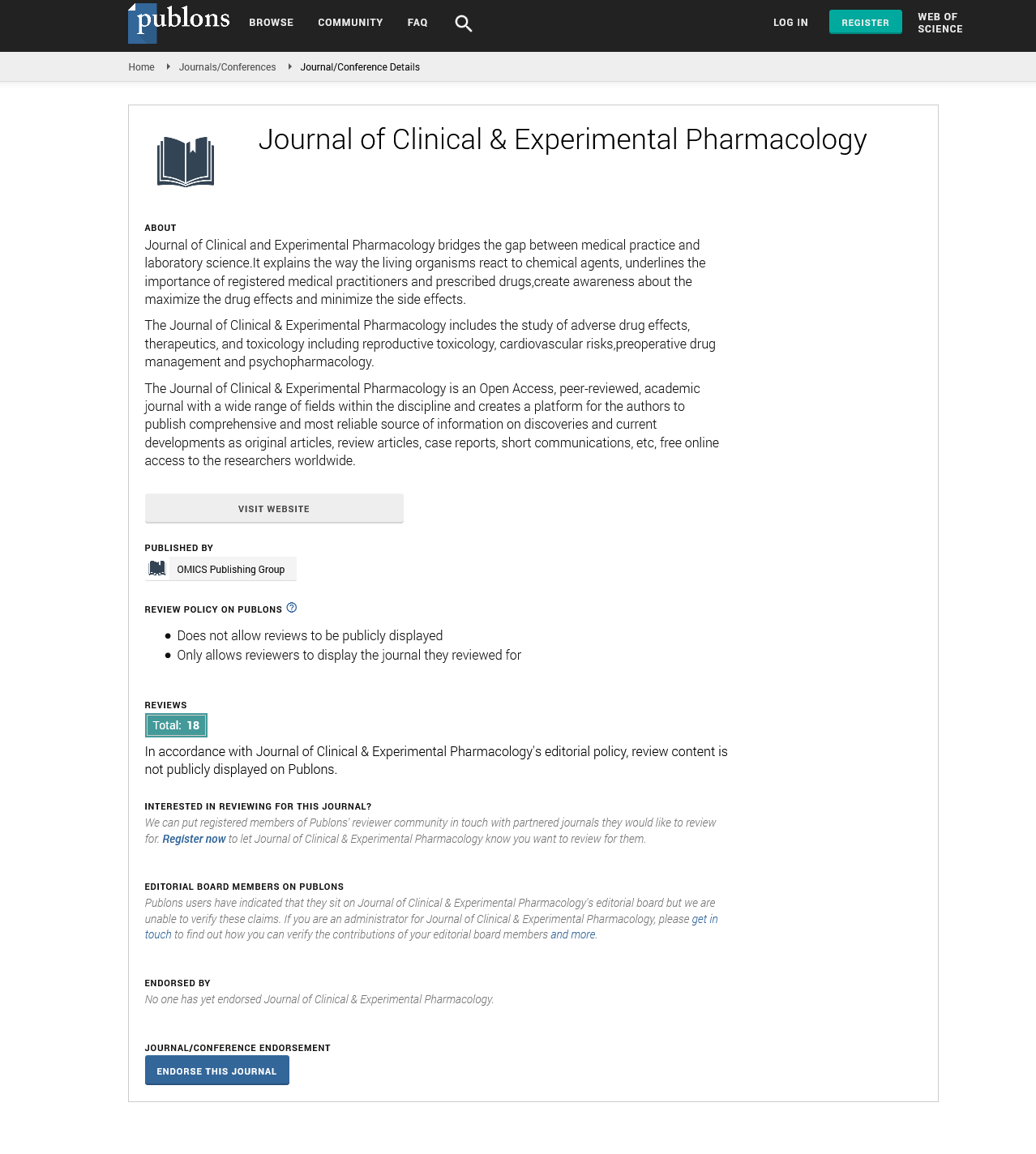Indexed In
- Open J Gate
- Genamics JournalSeek
- China National Knowledge Infrastructure (CNKI)
- Ulrich's Periodicals Directory
- RefSeek
- Hamdard University
- EBSCO A-Z
- OCLC- WorldCat
- Publons
- Google Scholar
Useful Links
Share This Page
Journal Flyer

Open Access Journals
- Agri and Aquaculture
- Biochemistry
- Bioinformatics & Systems Biology
- Business & Management
- Chemistry
- Clinical Sciences
- Engineering
- Food & Nutrition
- General Science
- Genetics & Molecular Biology
- Immunology & Microbiology
- Medical Sciences
- Neuroscience & Psychology
- Nursing & Health Care
- Pharmaceutical Sciences
Anti-melanogenic effects of oyster hydrolysate in C57BL/6J mice through down-regulations of MITF, tyrosinase, TRP-1 and TRP-2
5th International Conference and Exhibition on Pharmacology and Ethnopharmacology
March 23-25, 2017 Orlando, USA
Se Young Choung, Jae Hyeong Han and Jun Woo Lee
Kyung Hee University, South Korea
Posters & Accepted Abstracts: Clin Exp Pharmacol
Abstract:
Melanin protects the skin from UV-induced damage. However, excessive melanin biosynthesis induces hyperpigmentation which can result in pigmentary disorders, such as freckles, moles and senile lentigines. Oyster Hydrolysate (OH) was reported to have antioxidative peptides and some of the antioxidants down-regulate melanogenesis. Therefore, we hypothesized that OH downregulates melanogenesis. To investigate the inhibitory effect of OH on melanin biosynthesis in C57BL/6J mice, hyperpigmentation was induced by UVB irradiation for 10 days. Then the mice were orally administered OH or ascorbic acid (positive control) for 9 weeks. At 3, 6 and 9 weeks, we sacrificed the mice and assessed the inhibitory effect of OH on melanin biosynthesis in the ears by DOPA and Fontana-Masson staining. The number of melanocytes and the distribution of melanin granules were dose-dependently decreased in DOPA and Fontana-Masson staining of the mice treated with OH. Furthermore, we investigated the inhibitory mechanisms of OH on melanin biosynthesis. MITF regulates tyrosinase which is the rate-limiting enzyme. Three melanocyte-specific enzymes (e.g. tyrosinase, TRP-1 and TRP-2) catalyze the reaction that tyrosine is converted into melanin pigments. To determine whether OH inhibits the melanin biosynthesis, we detected the protein expressions of MITF, tyrosinase, TRP-1 and TRP-2 using western blot analysis. We found that OH downregulated the protein expressions of MITF, tyrosinase, TRP-1 and TRP-2 which were increased by UVB irradiation. These results elucidated that OH may be promising as an anti-melanogenic component, and further investigations should be performed regarding its potential as a whitening agent.
Biography :
Se Young Choung has completed his PhD from Tokyo University. He is a Professor of Kyung Hee University College of Pharmacy. He has published more than 60 papers in reputed journals and has been serving as a President of repute in Korea Accreditation Council for Pharmacy Education. He is interested in development of natural product-derived drug and health functional food. (E.g. skin beauty, protection of eye degeneration and improvement of embolic syndrome).
Email: han90@khu.ac.kr

